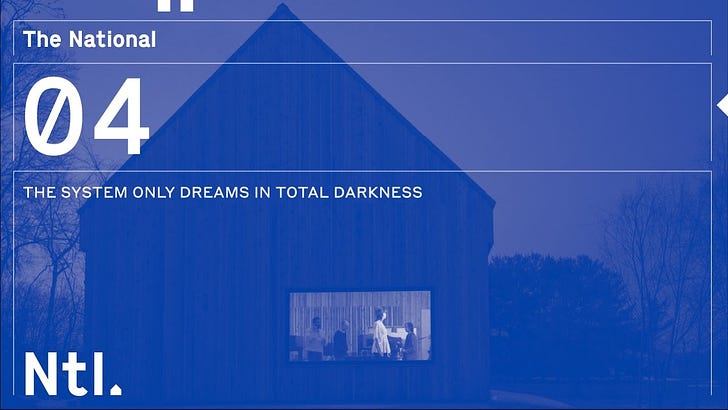When using my mobile - I don’t need to know what phone provider you are with; I could be with Telstra, you could be with Optus, and we can still communicate.
Imagine what it would be like if that weren’t possible? We’d likely have one dominant service which everyone used so they could communicate with everyone they meet.
This is where we are currently at with social media platforms; If you’re on Facebook, you can only communicate with your friends on the same platform. This is intentional; it helps them build a defensive network effect where it’s really difficult for people to leave.
Facebook has recently dabbled with interoperability with Instagram, but it kind of defeats the purpose as both of them are owned by the same organisation.
Defensive networks
This defensive network effect gives social media platforms a lot of power over their consumers. For example, if their communications were interoperable with other services, I wouldn’t need to stick around if I wanted to remain in contact with a large portion of my social circle. Instead, I could migrate to another platform that wasn’t using my data to manipulate me, and I could still communicate with all of my friends that stayed.
Over time, this would lead to more ethical practices within the social media landscape as users would be able to vote with their feet more easily and decide what platforms aligned with their values.
This isn’t a particularly new idea either; email is based on a shared protocol too; it would be like if Gmail forced all of their users to only send emails to other people who have Gmail.
How will an open network compete with a closed one?
The way I see it is there are two main ways to grow an interoperable network.
Regulation
Telecommunications companies are required by law to communicate with one another; open banking was enforced to give consumers more options to switch who they bank with. But, unfortunately, we currently don’t have regulations around how social media platforms must communicate with one another. One of the routes to getting here is through regulation; however, I wouldn’t hold my breath on this one.
The rising tide of interconnectivity
In the early days of the internet, a vast amount of software was closed source. Big corporations like Microsoft would develop things in isolation. Over time, however, open-source code has been on the rise. Multiple companies which have the same problem have all contributed to the same codebase and gained value from the contributions of others. Notable projects include React, Next JS, etc.
The same thing that happened to open-source could also occur with the interoperability of services. In my mind, the two main things holding this back is insufficient infrastructure for storing this data in a decentralised and privacy-conscious way and understanding of interoperable design patterns.
Once these problems are solved, it’s just a matter of getting new services and startups to integrate the protocol and then they can benefit from one another and beat the network effects of these tech conglomerates.
What should be interoperable?
Aspects of this are uncharted territory; in which situations does it make sense to be interoperable? Under which conditions should it be avoided? For example, if I’m on a dating app, it makes absolutely no sense for me to be receiving messages from my friends on Discord. Does it make sense to have a shared contact list on Discord and Facebook, however? What about Whatsapp, Signal and Messenger?
It becomes even more complicated when you begin to think about the target markets which different services have. For example, do you want to be matching or receiving messages from a user on a hookup app when you’re on a serious relationship app?
The question then arises - is it the services you meet people on or connect with that should be dictating which people you can communicate with within that ecosystem? Or is your relationship with that person what should dictate who you can communicate with? How would that be decided? Relationships are complicated, and it’s hard to fit people into boxes in that way.
Perhaps we should tie it to communities or groups that you belong to?
Shifting trust
When we use services such as Signal, when we message other people on the platform, we know that the other person is also using Signal. If a shift occurs where platforms become interoperable, as a user, you now need to be more concerned with trusting whatever service your contact is on.
This information could be displayed to a user if they are currently online, but an issue arises when they check their messages on a different platform.
Do you only show messages sent to platforms which the user had connected before sending the message? What if you only want to allow specific platforms that you trust to be able to receive them? All of these additional considerations impact how seamless the communications become.
We could overcome this by building services on a trusted framework, similar to how many web browsers are built on Chromium.
Methods of communication
Different communications platforms have a bunch of ways to communicate which aren’t necessarily compatible. That being said, there seems to be a bunch of trends that are shared between them.
Transience
How long does a message last? Some messages are permanently stored, others disappear after a certain period or even instantly (Snapchat, Zoom) or if an action is completed (Google Docs).
How the messages are displayed also impacts how transient it feels; if you’re in an instant messaging chat with a large group of people, so many messages are being sent that everything gets lost in the noise.
When you are in an intimate one on one conversation, it’s less transient.
Facebook posts within a group chat or threads make conversations more accessible for longer as it groups topics.
Synchronous communication
Live communication channels range from video chats and audio chats to indicators on a screen that someone is currently online, typing or looking at the same channel as you. They also expand into things like Google Docs, where you can see the location of the user’s cursor and what they are selecting or typing in real-time.
Asynchronous communication
Asynchronous communications channels allow people to bridge time; they are similar to leaving a note on a piece of paper. These include anything from seen indicators on messages sent, posts, pre-recorded videos, etc.
Contextual communication
Some messages are tied to a specific context; this can range from people leaving messages on one of the elements on a profile on Hinge to comments on a Facebook post to creating threads tied to particular sentences in Google Docs. This also includes things like reacts and replies to messages.
Channels
Are these messages public? Are they directly to another user? Should only people within a specific group have access to it? How do we reason about which channels should be shared across different platforms and which ones are specific to the context of the space they are in?
Components
Many services have begun duplicating very similar functionality as one another, such as snaps, stories and fleets; rooms and spaces; Do we really care about the context in which these posts were made? Or is it more important the groups of people who have access to the content? For example, should a new service be able to be built that subscribes to stories in a context outside of Facebook? So long as the user has the permissions to view them, is it really up to tech companies to dictate how user’s are consuming content?
What if that new service has a concept similar to stories but functions slightly different? Maybe the length of the recording differs, or they don’t support Reacts? Is the context lost that the original poster intended if only portions of those features are displayed in another service?
Cohesion of experience
As technology becomes more integrated into society, what do we lose by providing different lenses to consume our environment to other people? Social media currently feels like a cohesive space; how does that change when you know everyone on the platform is consuming that content differently?
How is that different when social technology begins to overlay physical space? We may end up at a point where all the people we see on the street appear different from what you see when you look at them. We may be in the same physical space but receive entirely different messages or sensory inputs from other people.
Is this a path we want to go down? Or should spaces remain as a shared experience for everyone involved?






















